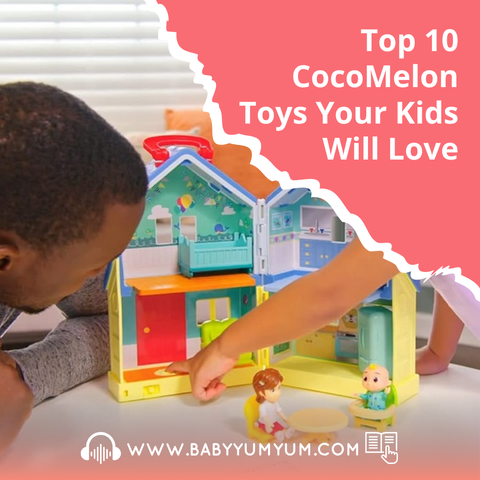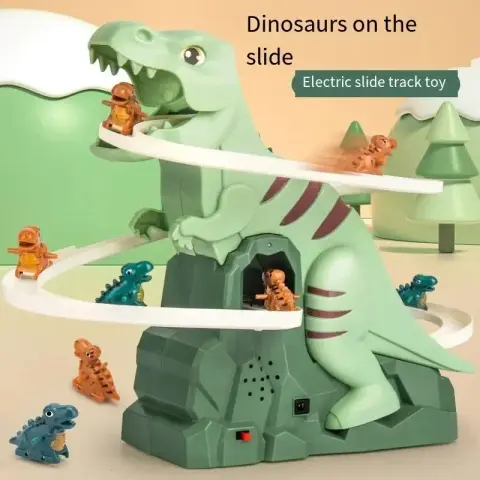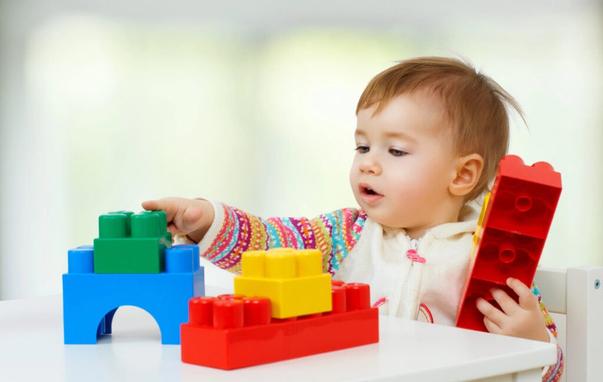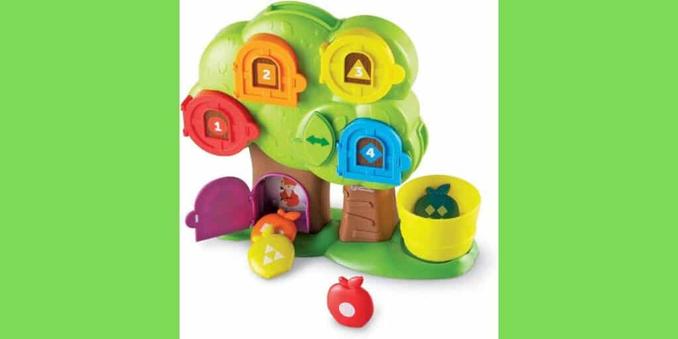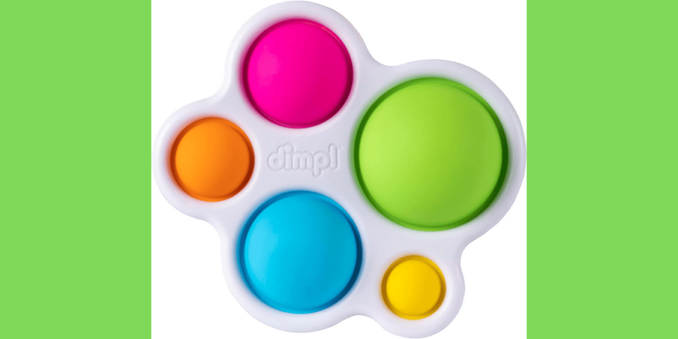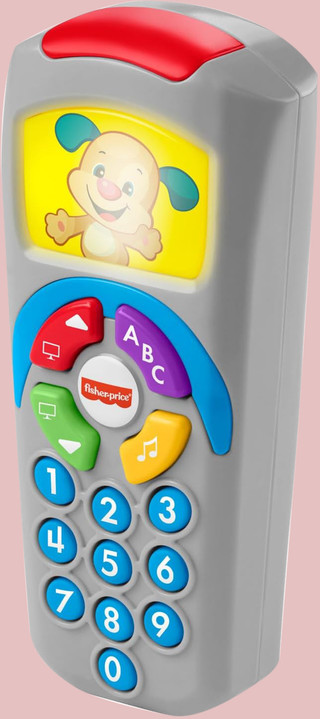10 Fine Motor Skills Toys I Love And How They Help Kids Work On Their Development
Photo by choreograph on Deposit Photos
Almost every parent wonders, “What type of toys should my child play with?” With the market saturated with so many children’s toy options for kids of all ages, it can be hard to weed out which provides educational and developmental support to your child.
If you want to help your children develop fine motor skills, some toys are much better than others. I’ve focused on 10 toys and toy categories that offer different ways for your children to work on their fine motor development, with the bonus of building their problem-solving skills.
Here’s my personal list of the 10 best fine motor skill toys.
Learning Resources Hide & Seek Learning Treehouse
Photo Credit: Learning Resources Store
Learning Resources is a great toy brand that focuses on creating toys with elements that challenge your child to use their fine motor skills, such as picking up objects, sorting different colored items, and opening doors.
The Hide & Seek Learning Treehouse does just that by having five numbered doors, all in different colors, with an animal friend waiting inside! As a bonus, the treehouse comes with the same five colored apples that your child can hide in each door or slide through chutes in the tree into the accompanying bucket.
How This Toy Helps With Fine Motor Skills In Children: This toy helps with the fine motor skills of opening and closing doors, putting the apples inside the doors, and dropping through the chutes in the tree.
Pop-It Fidget Toys
Photo Credit: Dimpl
You can’t beat the original Dimpl Pops from Fat Brain when wanting to help your child hone in on their fine motor skills. Fat Brain has many varieties of pops to choose from, but the original Dimpl boasts a modest cost and provides all the entertainment needed!
How This Toy Helps With Fine Motor Skills In Children: With five different colored pops in all shapes and sizes, the Dimpl allows your child to work on pushing the pops from one side to another while flipping the Dimpl around to repeat the process. It also works on learning their colors as well!
See also How to Make a Crocheted Baby Toy from Leftover Blanket Squares
Crinkle Tubes
Photo: Special Supplies Store
These crinkle tubes are a straightforward toy but can provide an extended period of entertainment while helping develop a child’s fine motor skills. These tubes can be used at almost any age as they work on hand strength by elongating and then pushing back the tubes.
How This Toy Helps With Fine Motor Skills In Children: Fine motor skills are exercised through stretching and pushing the tubes back together. You can encourage your child to push the tube back together one notch at a time, or use one big push with their hand strength to push the tube back together all at once.
Stacking Toys
Photo: KIDSTHRILL
Any and all stacking toys are great for young children as they learn how to manipulate objects by stacking them in many different ways, such as multiple short stacks or one large stack. Stacking toys can range from blocks, rings, or, my personal favorite, cups!
How This Toy Helps With Fine Motor Skills In Children: Stacking cups allows your child to use trial and error when stacking the toy and figuring out how different objects balance. With stacking cups, your child can use size and color identification while stacking them either on top or inside each other.
Counting Dinosaurs (Or Your Object of Choosing)
Photo Credit: Skrtuan Store
These counting dinosaurs are great for older children who can play with smaller objects. These dinosaurs come in different colors and shapes, and buckets and tongs are used to sort them.
How This Toy Helps With Fine Motor Skills In Children: Their fine motor skills will be tested by using the tongs to pick up, grasp the dinosaur, and then release it into its correct bucket, activating all sorts of muscles in their tiny hands!
See also Roominate Studio Review
Again, counting toys should be geared toward older children, as they can be a choking hazard.
Kinetic Sand
Photo Credit: Kinetic Sand Store
Kinetic Sand, sometimes known as “Moon Sand,” allows for some sensory playtime at the table. Kinetic Sand is a great way to introduce new textures to your child while allowing them to explore different ways to manipulate the sand.
How This Toy Helps With Fine Motor Skills In Children: This kit comes with all the materials needed for your child to scoop, smush, and cut the Kinetic Sand into different shapes and sizes while exposing them to the semi-solid state of the sand. Exposure to activities like this unlocks another area of developing fine motor skills that sometimes more traditional toys can’t reach.
Baby Gym or Playmat
Photo Credit: iGratens Store
A necessity for parents with young children, a baby gym or playmate is one of your child’s first exposures to develop their fine motor skills. Many baby gyms have a safe, soft surface for your baby to lay on while they gaze up at different mobiles to engage with. These might be mirrors, rattles, various shapes and colors, or many other options.
How This Toy Helps With Fine Motor Skills In Children: Baby gyms or playmats are crucial in those first few months of parenting, not only to provide a safe space for your baby but also to help them develop their skills in reaching and grabbing for objects and identifying other senses.
Laugh & Learn Smart Puppy
Photo Credit: Fisher-Price
While none of the toys mentioned make sounds or light up so far on this list, this Laugh & Learn Smart Puppy is an exception.
How This Toy Helps With Fine Motor Skills In Children: This puppy has different commands for your child to follow, like pressing a specifically labeled body part like their hand or their foot, while also allowing them to press and play music on the puppy’s body.
See also Common Car Seat Installation and Daily Use Mistakes Made by Parents
This toy can span multiple ages, as it works on cause and effect by pushing different parts of the toy for specific outcomes and matching colors, words, and commands.
Pop-Up Books
Photo Credit: Nina Laden
Reading to your child is a fundamental part of growth and development, including exercising your child’s fine motor skills through pop-up books. Pop-Up or Lift-the-Flap books are an excellent activity for you to do with your little one.
How This Toy Helps With Fine Motor Skills In Children: You get to sit and read together and watch them interact with the book by lifting flaps or opening up sections for characters to pop out and say hello!
These types of books usually incorporate some game as well, like peek-a-boo!
Matching Puzzles
Photo Credit: SYNARRY Store
A fan favorite among parents for children is matching puzzles. The great thing about matching puzzles is that you can typically buy them in a pack, and they come in various shapes, themes, and sizes! These puzzles task your child with building animals, while others can have them match up the alphabet or types of vehicles.
How This Toy Helps With Fine Motor Skills In Children: While children can get frustrated with matching puzzles as they find pieces don’t fit as easily as they want them to, they are developing their fine motor skills by having to move the puzzle pieces around to find the correct position for the puzzles while also practicing patience as well!
#childDevelopment #fineMotorSkills #toddlerToys #toys
